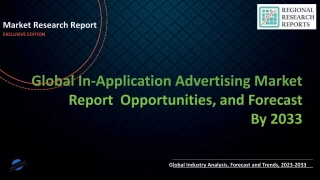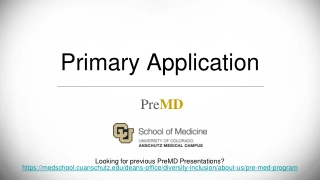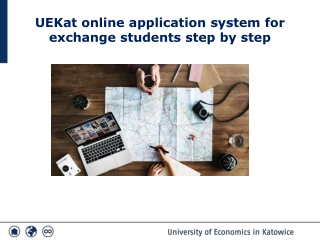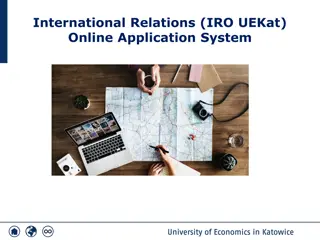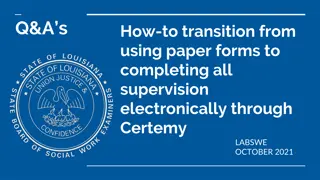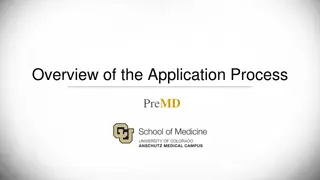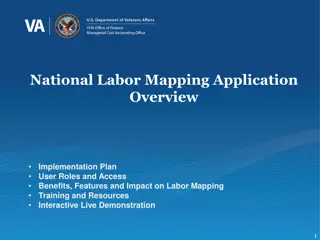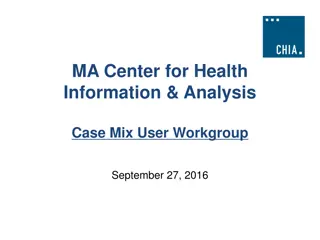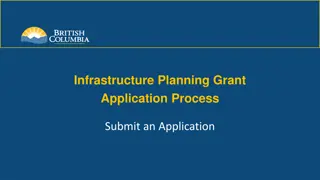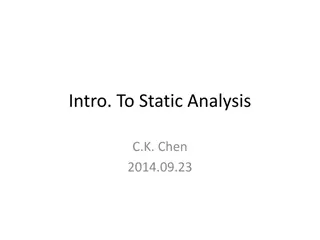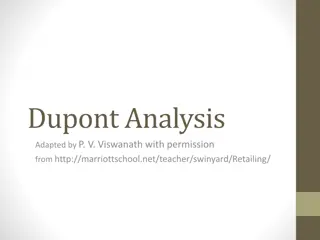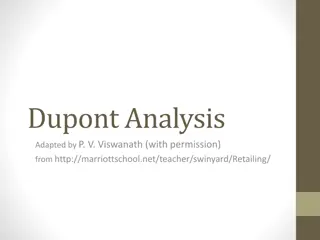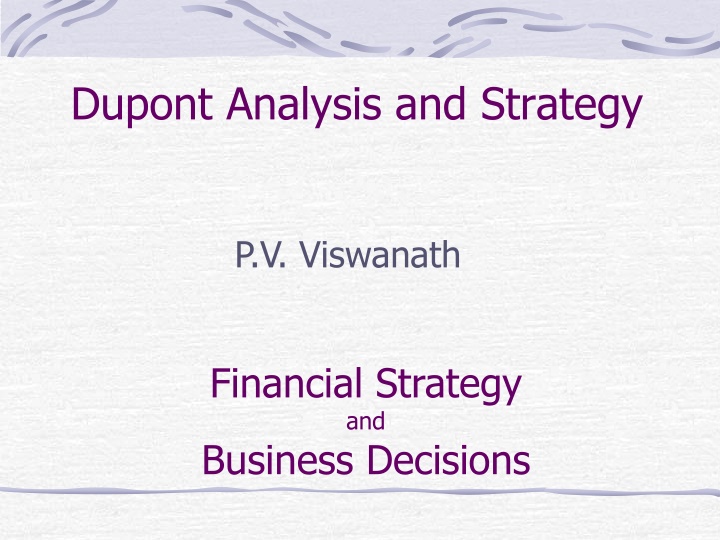
Dupont Analysis and Strategy Breakdown for Financial Decision-Making
Understand the Dupont Model and its alternative decompositions to enhance financial strategy decisions. Explore how to analyze ROA and ROE using Net Income, Asset Turnover, Equity Multiplier, and more. Learn about isolating net operating profit for improved performance tracking. Discover different ways to categorize assets and liabilities for better financial assessment and monitoring.
Uploaded on | 1 Views
Download Presentation

Please find below an Image/Link to download the presentation.
The content on the website is provided AS IS for your information and personal use only. It may not be sold, licensed, or shared on other websites without obtaining consent from the author. If you encounter any issues during the download, it is possible that the publisher has removed the file from their server.
You are allowed to download the files provided on this website for personal or commercial use, subject to the condition that they are used lawfully. All files are the property of their respective owners.
The content on the website is provided AS IS for your information and personal use only. It may not be sold, licensed, or shared on other websites without obtaining consent from the author.
E N D
Presentation Transcript
Dupont Analysis and Strategy P.V. Viswanath Financial Strategy and Business Decisions
Topics Alternative Decomposition of the Dupont Model Generic Competitive Strategies and the Dupont Model Interactions between A/R and Sales Interactions between A/P and Purchases. Profit Leveraging
Standard Dupont Analysis ROA = NI/TA = (NI/Sales) x (Sales/TA) = (Net Profit Margin) x (Asset Turnover) ROE = NI/TE = ROA x (TA/TE) = (NI/Sales) x (Sales/TA) x (TA/TE) = Net Profit Margin x Asset Turnover x Equity Multiplier Blunt instrument to monitor strategy because The denominator in the ROA includes assets claimed by all providers of capital, while the numerator includes only return to providers of equity. Assets include operating assets and financial assets Net income includes income from operating activities, as well as interest income and expense, which are the consequence of financial decisions.
Alternative Decomposition The key is to divide assets into operating assets and non-operating (or financial) assets, and similarly the liabilities into those associated with the firm s operations and those that are financial and hence not associated with the firm s operations. Some of the firm s long-term liabilities are non-interest bearing, such as pension obligations, which are really part of the firm s operations rather than its financing because they represent labor compensation. We net the firm s long-term assets net of these non-interest bearing liabilities to get Net long-term assets. Similarly, we would like to create a category of short-term assets that includes all short operating assets, net of all short-term operating liabilities. This gives us Operating Working Capital, defined as (Current Assets Cash and Marketable Securities) (Current Liabilities Short term debt and current portion of long-term debt). Net Assets = Net long-term assets + Operating Working Capital Net Debt = Total interest bearing liabilities Cash and Marketable Securities (Cash is typically treated as negative debt, which is debatable.)
Alternative Decomposition Similarly, we isolate and use net operating profit, rather than using Net Income (which includes interest). This is done by adding back interest expense to net income, after adjusting for their tax impact. Similarly, interest income. Thus, we first define (NIntAT) Net Interest expense after tax as (Interest expense Interest Income)x(1-Tax rate). Then Net Operating Profit After Taxes (NOPAT) = Net Income + Net Interest Expense after taxes; and Net Income = NOPAT NIntAT.
Alternative Decomposition ROE = (NOPAT/Equity) (NIntAT /Equity) = (NOPAT/Net Assets) x (Net Assets/Equity) (NIntAT)/Net Debt) x (Net debt/Equity). If we rewrite Net Assets as Net Debt + Equity, we get the following: ROE = (NOPAT/Net Assets) x (1+Net Debt/Equity) NIntAT/Net Debt x (Net debt/Equity). Defining NOPAT/Net Assets as Operating ROA and combining terms with NIntAT/Net Debt (which is the effective interest rate after tax on debt), we get ROE = Op ROA + (Op ROA Eff Int Rate after tax) x (Net Debt/Equity) =Op ROA + (Op ROA Eff Int Rate after tax) x Net fin leverage = Op ROA + Spread x Net financial leverage
Alternative Decomposition Since we are primarily interested in using the Dupont decomposition to help us in operating decisions, we can further decompose Operating ROA. Operating ROA = NOPAT/Sales x Sales/Net Assets or Operating ROA = NOPAT Margin x Operating Asset Turnover Note that this alternative decomposition contains no financing elements.
Dupont Analysis Applied We now try to relate Dupont Analysis to more specific operating strategies of the firm. In this process, we will find it useful to extend the Dupont decomposition.
Five Generic Competitive Strategies Type of Competitive Advantage Being Pursued Lowest Cost Overall Low-Cost Provider Strategy Differentiation Broad Differentiation Strategy Broad Cross- Section of buyer Best-Cost Provider Strategy Market Target Narrow Buyer Segment Focused Low-Cost Provider strategy Focused Differentiation Strategy
Gerald Smith & Profit Leveraging Op ROA = NOPAT Margin x Op AT Hence Op ROA/ NOPAT Margin = Op AT Hence high Op AT firms should try to improve margins For each unit increase in Margin, ROA increases by the amount of Op AT And Op ROA/ Op AT = NOPAT Margin High Margin firms should improve Op AT! For each unit increase in Op AT, ROA increases by the amount of NOPAT Margin
Low Gross Margin Strategies If Op Margins are low, then driving volume may not be valuable. It might be better to focus on improving margins. This may be done by thinking of the customer as the unit of analysis, rather than the product. Cross-selling the customer other potentially higher-margin products may be more valuable. U-Haul strategically sets low prices and margins on basic truck and trailer rentals to maintain a large mass-market base, but then promotes add-on ancillary products and services offered and promoted to its large base of self-service customers, such as moving boxes, dollies, lifts etc. What strategy is this?
High Gross Margin Strategies? For high gross margin products, an effective strategy might be to go beyond the specific segment currently being served. This could be done by using intensive advertising to drive product sales volume across the entire market, regardless of the varying price sensitivities of different market segments and to aggressively use sales promotions and price discounting to stimulate sales volume because initial margins are large enough to permit discounting. However, discounting might work against branding. To guard against this, advertising, loyalty programs, innovation and distribution activities can be used to reduce price sensitivity and to increase the likelihood of repeat purchases. Examples: Packaged goods companies like Kellogg, General Mills and Kraft General Foods use such a model in their breakfast cereals segments. What kind of strategy is this?
How to Produce Cost Advantages Let s look at the Asset Turnover Ratio. This is defined as Sales/Assets. How can this be improved? This can be done in two ways: You can either increase sales with the same assets or decrease assets and generate the same with the same sales. We will see some examples of this next.
How to Produce Cost Advantages Let s rewrite the AT ratio as (Sales- COGS+COGS)/Assets. Sales-COGS or gross profit margin is addressed by differentiation; so the focus here is on COGS/Assets. Perform value chain activities more cost-effectively than rivals. Economies of scale; manifests itself in lower COGS/Assets ratio (better asset utilization) Cost efficient supply-chain management Reduce inventory costs (lower assets) Use online systems to achieve operating efficiencies (better COGS/Asset) Revamp the firm s overall value chain to eliminate or bypass some cost-producing activities altogether (e.g. outsourcing)
Corporate Examples WalMart: streamlining orders, automation of distribution centers Nucor Corporation: Using relatively inexpensive electric arc furnaces where scrap steel and directly reduced iron ore are melted. Makes the use of coal, coke and iron ore unnecessary; cuts investment in facilities and equipment (eliminating coke ovens, blast furnaces, basic oxygen furnaces, and ingot casters). Southwest Airlines: no inflight meals, assigned seating; fast online reservation system; automated check-in equipment Q: How do these activities affect the income statement and the balance sheet?
General Differentiation Strategies Incorporate Product attributes and user features that lower the buyer s overall cost of using the product. Incorporate features that raise product performance. Incorporate features that enhance buyer satisfaction in noneconomic or intangible ways. Differentiate on the basis of competencies and competitive capabilities that rivals don t have or can t afford to match
Specific Differentiation Strategies Product R&D activities improved product design and performance features; e.g. Volvo or BMW Supply Chain activities that affect the performance or quality of the company s end product. Starbucks has a better product because it has strict specifications on the coffee beans. Marketing, sales and customer service activities that result in superior technical assistance to buyers, faster maintenance and repair services, more and better product information for customers, more and better training materials for end users, better credit terms, quicker order processing etc.; e.g. Maytag Note that these have an effect on Assets and hence can decrease Asset Turnover Ratio. Hence this is not a get-out-of-jail-free card. These strategies still have to be considered in light of the firm s resources and capabilities.
Low Cost Provider Strategy Striving to achieve lower overall costs than rivals and appealing to a broad spectrum of customer, usually by underpricing rivals. Marketing Tactic: Low Price Reduced profit margin traded off against higher asset turnover Operating Tactic: Economies of Scale Higher total assets leading to lower costs and higher profit margin. These two strategies operate in different directions, one going from PM to AT and the other going from AT to PM. They have to be worked in tandem.
Broad Differentiation Strategy Seeking to differentiate the company s product offering from rivals in ways that will appeal to a broad spectrum of buyers. Marketing Tactic: General Advertising need to reach a broad audience; this could be broken down by advertising channel. Higher expenditures on general TV ads, relatively fewer on direct marketing. Operating Tactic: Product R&D
Best-Cost Provider Strategy Giving customers more value for the money by incorporating good-to- excellent product attributes at a lower cost than rivals. The objective is to have the lowest costs and prices compared to rivals offering products with comparable attributes. Marketing Tactic: Direct marketing Operating Tactic: R&D, efficient use of working capital
Best-Cost Provider Strategy Chipotle Relies on organic ingredients to create tasty burritos that are sold at prices comparable to fastfood restaurants Target Offers competitive prices, but also differentiates itself from other discount retailers by carrying products from trendy designers such as Isaac Mizrahi, Michael Graves (https://www.usatoday.com/story/money/2019/09/12/target-collection-lilly- pulitzer-issac-mizrahi-launches-saturday/2224884001/) https://opentextbc.ca/strategicmanagement/chapter/best-cost-strategy/
Focused Low-Cost Strategy Concentrating on a narrow buyer segment and outcompeting rivals by having lower costs than rivals and thus being able to serve niche members at a lower price. Marketing Tactic: Direct Marketing Operating Tactic: Efficient use of working capital
Focused Differentiation Strategy Concentrating on a narrow buyer segment and outcompeting rivals by offering niche members customized attributes that meet their tastes and requirements better than rivals products. Marketing Tactic: Direct Marketing Operating Tactic: R&D
Focused Differentiation Strategy Kopi Luwak Coffee Beans These beans are found in the droppings of the civet, a nocturnal animal in Southeast Asia s coffee-growing lands for the tastiest, ripest coffee cherries. Commands Premium Prices Breezes Resorts, a company that caters to couples without children. The firm operates seven tropical resorts where vacationers are guaranteed that they will not be annoyed by loud and disruptive children.
Generic Competitive Strategies: Detail Type of Competitive Advantage Being Pursued Lowest Cost Overall Low-Cost Provider Strategy Low Price Economies of Scale Best-Cost Provider Strategy Direct Mktg R&D, efficient use of wkg cap Focused Low-Cost strategy Direct Mktg Efficient use of working capital Differentiation Broad Differentiation Strategy Gen Advtg Product R&D Broad Cross- Section of buyer Market Target Narrow Buyer Segment Focused Differentiation Strategy Direct Mktg Product R&D
Generic Competitive Strategies: Examples Type of Competitive Advantage Being Pursued Lowest Cost Overall Low-Cost Provider Strategy Wal-Mart, 99 Cent Stores, Dollar Tree Best-Cost Provider Strategy UPS, Budweiser, Target Focused Low- Cost strategy Dairy Queen, Tabasco Differentiation Broad Differentiation Strategy Starbuck s, Land s End, Victoria s Secret Broad Cross- Section of buyer Market Target Narrow Buyer Segment Focused Differentiation Strategy Trader Joe s, Micro- breweries, Breezes
Generic Strategies: Comparison Strategy Cost Price Quality Margin Vol Marketing Tactic Low Price Operating Tactic Ratio Low-cost provider strategy Low Low Low Low High Economies of Scale; high working capital utilization; high fixed asset utilization R&D Higher Sales/Net Working Capital; Lower COGS/Assets Broad differentiation strategy Med Med- to-high Med-to- high Medium Mediu m Branding; General Advertising; moderately high mktg costs Direct Marketing; low marketing costs General Advertising Higher R&D/Sales; lower Sales/AR; high advertising expenses/Sales Best-cost provider strategy* Focused low costs strategy Low- to- Med Low Med- to-high Higher Low-to- medium Med- to-high R&D, efficient use of working capital High Sales/NWC Medium COGS/Assets Low Low to Med Low Med- to- High high working capital utilization; moderately high fixed asset utilization Moderate COGS/Assets, Sales/A/R may not be high but Sales/Assets are still relatively high Focused differentiation strategy Med High High High Low Direct marketing R&D High Direct Mktg/Sales ratio; high R&D/Sales
A further decomposition? If we separate Net Income into Sales COGS Direct Marketing expenses General Advertising Expenses Other expenses, we can write ROA as: [Sales/Assets] x [1-DME/Sales - GAE/Sales - Other exp/Sales] COGS/Assets The inverse of Sales/Assets can be written as (NWC + Net Long-term Assets)/Sales and NWC can be further broken down, if necessary.
New Ratios to Consider From the previous analysis, we see the value of looking at new ratios: Profitability Ratios Direct Marketing Expenses/Sales General Advertising Expenses/Sales Other expenses/Sales Asset-Use Efficiency Ratios Total Assets/COGS Net Working Capital/Sales Net Long-Term Assets/Sales
Accounts Payable and Purchases It may sometimes be worthwhile substituting bank credit with supplier finance, which is likely to be cheaper. This is because it is typically less profitable for an opportunistic borrower to divert inputs than to divert cash. Therefore, suppliers may lend more liberally than banks. Suppliers can charge lower rates than banks because banks have much more difficulty in monitoring that the money is used for the stated purpose. But when a loan is made in conjunction with a purchase of inputs, the monitoring is already in place. On the other hand, trade credit can only be used to buy inputs. Hence the availability of trade credit also frees up the use of scarce bank credit for other purposes. Thus when the availability of bank credit is limited, it may make sense for the firm to resort to trade credit even if the cost of trade credit is higher than the cost of bank credit (as long as the return to the firm on investment is greater than the cost of trade credit of course.) Mike Burkart and Tore Ellingsen, In-Kind Finance: A Theory of Trade Credit, American Economic Review, June 2004, pp. 569-590
Reasons for Trade Credit: Collateral Why might suppliers be willing to lend when banks are not? Trade creditors may place a higher collateral value on borrowers assets. This may be because the supplier has an advantage in valuing the underlying assets, particularly when those assets are not homogenous. Also, because suppliers have a network of alternative buyers, they place a higher liquidation value on the assets and will lend at a cheaper rate than banks otherwise would. Key to the collateral theory of trade credit is the assumption that suppliers have strong legal rights and institutions supporting their ability to reclaim and/or liquidate collateral.
Reasons for Trade Credit: Information Suppliers may have an informational advantage over banks, enabling them to screen and monitor loans more effectively. This may be because of the frequency of interactions and the types of information exchanged. For example, the supplier may visit the buyer s premises more often than financial institutions or may obtain information about the buyer s creditworthiness through demand forecasts and other operational information. Also, it is less profitable for an opportunistic borrower to divert inputs rather than to divert cash; this reduces the monitoring costs of the trade creditor, putting him at an informational advantage relative to banks.
Reasons for Trade Credit: Relationship Suppliers may be willing to finance their customers because their payoff differs from that of the bank. Trade creditors, desiring to maintain an enduring product market relationship, grant more concessions to a customer in financial distress than would be granted by lenders in competitive lending markets. The trade relationship may involve specific investments for which customers are dependent on the supplier for intermediate goods and the customer is a key client of the supplier. In this case, customers have less incentive to default on their suppliers than on their banks, and suppliers have stronger incentives to extend credit to distressed buyers.
Accounts Receivable and Sales By providing credit to your buyers, you are also providing an implicit quality guarantee. This is because if your product quality is bad, then it will be more difficult to collect. Hence provision of credit to buyers is also a quality-guarantee provision. When the seller's reputation for quality products is more likely to be known (the firm is older and larger), two-part credit offers (cash or credit) tend to dominate net terms, indicating that terms are designed to deal with credit quality issues rather than product quality issues. When reputation of the buyers is likely to be high, credit terms are more likely than cash terms (credit terms are cheaper than bank borrowing costs). Chee K. Ng, Janet Kiholm Smith and Richard L. Smith, Evidence on the Determinants of Credit Terms Used in Interfirm Trade, The Journal of Finance, Vol. 54, No. 3 (Jun., 1999), pp. 1109-1129

